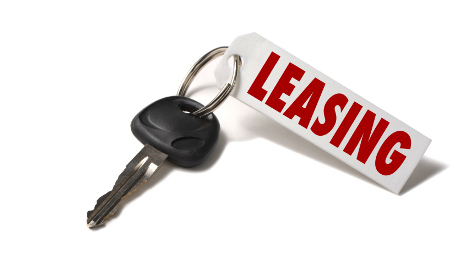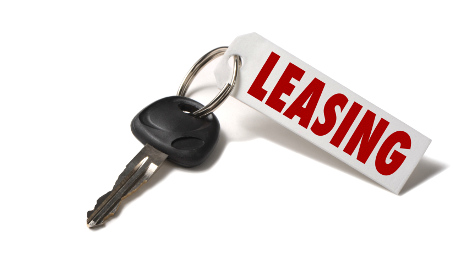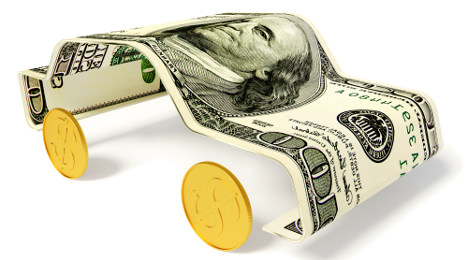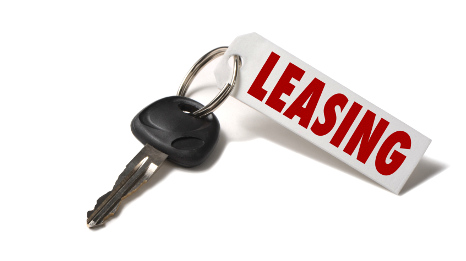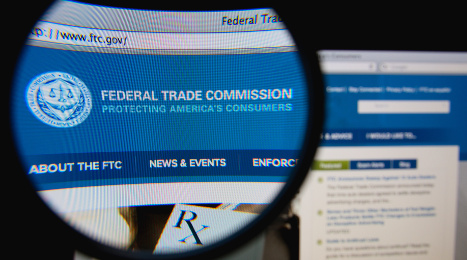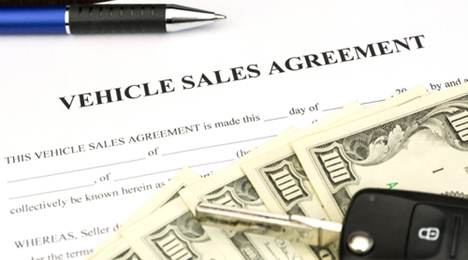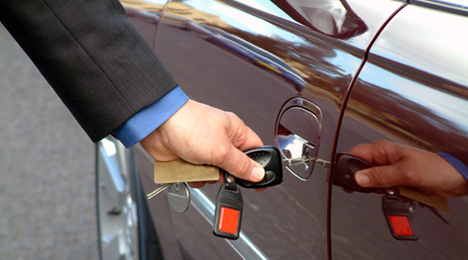Swapalease.com reported that vehicle lease credit approvals bounced back a bit in April versus the pace of approvals seen in March, registering a 3.2-percent gain.
Site officials indicated the April approval rate came in at 69.9 percent, up from the March reading of 66.7 percent.
Swapalease.com explained the return to monthly volatility in vehicle lease credit approvals — with the rate up one month and down the next — is mirroring consumer confidence trends in the economy. Consumer confidence was down in the month of April at 94.2, a dip from March when the number was at 96.1.
According to the United States Consumer Sentiment Forecast, consumer confidence is expected to continue to rise and fall from month to month. While this could impact other areas of the economy, it is expected to have minimal impact to the auto industry, as sales are again forecast to be strong throughout 2016.
“While we’re seeing plenty of growth still in the marketplace, particularly with trucks and luxury cars, the rate of vehicle lease credit approvals is an important indicator for lease environments,” Swapalease.com executive vice president Scot Hall said.
“We anticipate the lease credit approvals to remain volatile for the next few months while the environment for leasing remains robust,” Hall continued.
If you want get a sense of why Ally Financial decided to roll out a product specifically for used-car leasing, consider the statistics from Experian Automotive, says Tim Russi, Ally’s president of auto finance.
You may find that the numbers on used leases are a bit disproportional to consumer demand.
In the fourth quarter of last year, 96.2 percent of leases were for new cars, Experian said, leaving just 3.8 percent for used.
But here’s the thing: used cars represented nearly 63 percent of cars financed last quarter, according to Experian’s State of the Auto Finance Market report for Q4.
Granted, finance penetration is higher in new (85.9 percent) than used (54.7 percent) and the used-car market is much larger than the new-car market, but that doesn’t necessarily belie the demand. Used leasing, perhaps, is just an underserved option.
More than a third of new cars financed last quarter were new, Experian data shows.
So, Russi asks, why aren’t we seeing the same in used?
“As we looked at that, the answer that came back was, ‘there’s a lack of providers for a used solution,’” Russi said Thursday in a phone interview about the Ally Pre-owned SmartLease product launched last week.
“We saw it as a good opportunity to satisfy what we think is a consumer preference,” Russi continued. “There’s no reason why used can’t be as big as new — in fact, I would suggest it could actually have a larger penetration than new, just because the pool of financing in used is larger.”
But used leasing is a pool in which many providers, frankly, haven’t been willing to swim.
Captive mindset
Asked why there has been a lack of used leasing providers in the past, Russi pointed out that new-car leasing has predominantly been done by captives, who by nature are set up to facilitate new-car sales, for the most part.
That’s not to say they don’t offer used leasing; many do, as this November news story from Edmunds.com senior editor Matt Jones points out.
It’s just not necessarily a huge part of their business.
But used-car leasing is a huge opportunity for Ally.
“Then you marry that up with the fact that we’ve got the expertise and tools to manage leasing, and have historically been a large lessor,” Russi said. “Managing the residual risk is a core capability we have, where others may not have that capability.”
Remarketing, wholesale implications
Along those same line of management capabilities is remarketing the car once the lease is over. Enter Ally’s SmartAuction product.
With SmartLease, the consumer would get first crack at buying the car when the used lease ends. If the grounding dealer then doesn’t bite, the car goes through SmartAuction.
Then there’s the other side of that online wholesale environment: dealers bidding on cars.
When these folks are searching for inventory on SmartAuction, there will be signage, so to speak, to let dealers know which cars are eligible for SmartLease, Russi said.
The leasing program is currently offered on more than 35 models, with plans to expand “where there’s a meaningful payment differential” for the consumer, Russi said.
Those models include:
- Audi A4
- BMW 3 Series
- Buick Enclave
- Cadillac CTS, Escalade and SRX
- Chevrolet Cruze, Equinox, Malibu, Tahoe, Traverse, Silverado and Suburban
- Fiat 500
- GMC Acadia, Sierra and Yukon
- Honda Accord, Civic and CRV
- Jeep Grand Cherokee and Wrangler
- Maserati Ghibli, Gran Turismo and Quattroporte
- Mazda 3
- Mini Cooper Clubman, Convertible, Countryman, Coupe, Hardtop, Paceman and Roadster
- RAM 1500
- Toyota Prius
- Volkswagen Golf and GTI
Terms will mostly be three or four years.
Additionally, online marketplace Beepi will start offering SmartLease to its shoppers this month.
“Customers who shop for a car online at Beepi are looking for a seamless and customized buying experience,” Beepi head of business development Daniel Bilbao said in a statement.
“This gives them more choice,” he added. “So, whether people switch cars every few years or want to keep more money in their pockets, they can get the car they want with a flexible financing package to meet their changing lifestyle needs.”
Toyota CPO leasing
This news follows Toyota ramping up its leasing option in the Toyota Certified Used Vehicle program, which was first reported by Automotive News.
In an interview with our sister publication Auto Remarketing to discuss TCUV’s 20th Anniversary, Bill Fay — the group vice president and general manager of the Toyota division at Toyota Motor Sales, U.S.A. — said TCUV leasing has always been an option, but now they’ve essentially made it easier for dealers to use as a TCUV retail tool.
Toyota also worked with Toyota Financial Services and refined some of the residuals.
Generally speaking, TCUV leasing gives customers another price-point to choose from that might not be available in a conventional TCUV retail contract.
“(In) parts of the country … the consumer is so much more lease-prone and open to a lease alternative, that that’s really embedded in the way they sell their vehicles,” Fay said. “So, I think it was kind of a natural transition to — with our help — make it a little easier to lease some of these newer, certain-condition pre-owned vehicles as TCUV leases.
“I think we’re optimistic that it’s going to add a nice sales opportunity for us, especially in some of the areas where leasing is much more accepted from the consumer. But it’s still going to end up being a very small, 5 percent or less, part of our overall (TCUV) business as times goes on,” Fay added. “But we’re excited to be able to make a little bit of additional progress with it here as we start the year and know that we have some higher level of lease returns coming back to us and through the industry this year.”
But, will more automakers make leasing a bigger part of CPO?
“It wouldn’t surprise me,” Experian Automotive senior automotive market analyst Erik Hjermstad said during an interview at the NADA Convention & Expo in Las Vegas.
Think about all the risk from the flood of used cars coming back, he said.
“From a dealer’s standpoint, it’s easy to keep that business with that consumer,” Hjermstad said. “So to the extent now that the market is going to be flooding with those 2- and 3-year-old vehicles coming back, they’re going to do whatever they can to keep those consumers under their roof.
“If that means more leasing on the CPO side, I don’t think it would surprise me even a little bit,” he added. “Especially when you see what buying CPO versus used does in terms of customer loyalty … now you add in leasing, which increases loyalty on top of the CPO side, you could now be getting into the range of new loyalty rates (in the CPO market).”
Leasing, CPO fosters loyalty
Data that Experian presented at NADA bears that out.
CPO has 62.2 percent manufacturer loyalty, trailing new cars (64.8 percent) but nearly three points higher than non-CPO used (59.5 percent).
Likewise, make loyalty is 54 percent for CPO, versus 47 percent for non-CPO used and 57.5 percent for new.
Certified commands 20.9 percent model loyalty, against 26.1 percent for new and 15.1 percent for non-CPO used.
Meanwhile, the make loyalty rate is at 71.5 percent for leasing, compared to 60.6 percent for loans. Generally speaking, Experian’s data shows that leasing pushes up overall brand loyalty.
Overall vehicle depreciation for 2- to 6-year old vehicles is expected to reach 15 percent this year, representing an increase from the level of 13.2 percent experienced in 2015. That prediction arrived on Wednesday as Black Book and Fitch Ratings released their latest joint vehicle depreciation report
Analysts indicated the projected level of depreciation will mark the first time in the previous five years that annual depreciation crests above 14 percent. Despite this rate still remaining below average pre-recession levels, Fitch and Black Book believe this increase will be driven by several factors.
Black Book is forecasting new-vehicle sales to grow slightly to 17.6 million units in 2016. Black Book contends this level of sales activity, which brings a high volume of trade activity, coupled with a large amount of lease returns, will contribute to the continued increase in depreciation rates.
Meanwhile, Fitch expects U.S. prime and subprime auto loan and lease ABS performance to be stable and within historical loss levels. Although the firm acknowledges that annualized net losses will creep up in conjunction with marginally higher vehicle depreciation in 2016, as predicted by Black Book.
Analysts recapped that the strength in last year’s performance was largely driven by truck segments. The truck segments as a whole experienced half the depreciation rate of the car segments, with annual depreciation of trucks at 9.2 percent and cars at 18.2 percent.
The report went on to mention the variability in depreciation across the segments increased during 2015.
Among the trucks, the depreciation ranged from 2 percent to 23 percent across the segments, while among the car segments, the depreciation rates ranged from 14 percent to 22 percent.
“Given the spread and volatility across various segments, it becomes important for a lender to have a diversified portfolio,” Black Book and Fitch said. “Portfolios concentrated in smaller segments experienced the steepest decline in equity.
“With longer terms and softening used vehicle values, portfolio equity will experience higher risk as it would take longer for a loan to enter into a positive equity position,” the firms went on to say.
Black Book and Fitch also noted that pressure on residual performance will trend higher in 2016 due to expectations of elevated new vehicle sales, and higher fleet and rental volumes entering the secondary market during the year.
Despite this, Fitch believes auto loan and lease ABS ratings performance will not be impacted by the negative asset performance trends in 2016. The agency has a positive rating outlook for loan ABS in 2016, with the pace of upgrades expected to continue and be consistent with 2015 albeit at a slightly slower pace.
Fitch added that its outlook for auto lease ABS asset performance is stable in 2016 given pressure on residual values, but no impacted is expected on ratings which also have a stable outlook.
“The focus in 2016 will be in the depreciation disparity between car and truck segments, which showed a widening spread toward the end of last year,” said Anil Goyal, senior vice president of automotive valuation and analytics for Black Book. “We expect this spread to remain, however there is growing belief that cars are nearing their floor in terms of depreciation changes.”
The Black Book-Fitch vehicle depreciation report is a joint venture by the two companies utilizing Black Book’s used vehicle depreciation data, and Fitch’s U.S. Auto ABS indices data.
Black Book tracks used vehicle market depreciation rates providing an understanding of how vehicle prices impact automobile lenders and lessors, auto ABS transactions, consumers and other auto market constituents.
“All eyes will remain on the health of the economy and state of the wholesale vehicle market this year,” said Hylton Heard, senior director of Fitch Ratings. “Additionally, rising off-lease returns will result in overall higher used-vehicle volumes hitting the market and will pressure auto lease residual performance in 2016.”
The Black Book-Fitch vehicle depreciation report is available for download by clicking here.
Black Book vice president of lender solutions Barrett Teague recollected leasing activities back in the early 1990s; a span when subprime leasing as well as contracts stretching as long as 60 months made their way into finance company portfolios. Teague pointed out that recessionary conditions prompted consolidation and some elimination of that leasing activity.
But nowadays with new-vehicle leasing penetration at or above 30 percent, it’s almost like the 1990s are back in some ways. It’s also why Black Book published a white paper titled, Strategies To Help Maintain Profitable Leases In Your Portfolio.
During a phone conversation with SubPrime Auto Finance News on Tuesday, Teague explained how leasing is on the rise and not just for automakers and their captive finance companies turning luxury metal or vehicles with strong residual values.
“The manufacturers are doing a great job of bringing better and better merchandise and inventory to the marketplace,” Teague said. “Cars are performing significantly better for a longer period of time. I really think that’s part of what’s helping to fuel this leasing marketplace. Those vehicles can go through a standard or even a longer than standard lease cycle and still offer a great, valuable piece of inventory to a dealer to put back on their lot three to six years from now.
“We’re seeing and hearing conversations now from lenders that are re-entering that subprime market and the lease-here, pay-here market,” he continued. “We know that the quality of the inventory is out there. We just want to have the opportunity to offer some of this data to people so they can make the right decisions on how to structure their own portfolios when it comes to building a lease portfolio.”
The white paper produced by Black Book Lender Solutions offers what Teague explained are distinct examples leveraging collateral data to show how certain vehicles may be candidates for longer lease terms as an alternative strategy to leveraging incentives.
Teague pointed out this shift can help finance companies identify the right vehicles for longer terms by showing the collateral’s rate of depreciation, whereby certain vehicles will hold a stronger opportunity for off-lease remarket after 48 months rather than the more traditional 36-month lease term.
“It didn’t overly surprise us because we’ve always looked at which vehicles would perform better at different lengths on the loan side,” he said when the Black Book team discovered the differences.
“Historically we’ve talked about how segments do perform differently and they change, which is why you’ve got to keep a close eye what’s going on in the collateral data market,” Teague continued. “But inside those specific segments, vehicles perform differently.
“It’s very interesting to watch that some vehicles hold their value great at 24 or 36 months, and another car will come from behind and actually outperform that vehicle in residual value in the 48- and 60-month areas,” he went on to say. “We really think people should be paying attention to those specific differences amongst the vehicles and segments.”
With a wide array of financing sources seeking more clarity about leasing, Teague indicated the Black Book team spent much of the past several weeks focused on generating this white paper, which can be downloaded here.
“We have had calls from powersports lenders, subprime lenders, used-car specific lenders on top of the traditional captive lenders,” he said.
“When you think of the leasing world, you think of the captives. But I will tell you the marketplace is opening so quickly,” Teague continued. “People who are considering getting into this marketplace probably have plans to do so.
"And if you don’t have plans to do so, and you feel like making an entry, it’s time to be thinking about it because the leasing market is exploding,” he went on to say.
The Federal Trade Commission indicated this week that two Ohio dealers have agreed to settle charges from the agency that they deceived consumers with advertisements that touted low monthly vehicle lease payments but failed to disclose key terms of the offers.
The FTC’s administrative complaint alleged that Progressive Chevrolet Co., and Progressive Motors, of Masillon, Ohio, failed to properly disclose terms such as the total amount due at signing, whether a security deposit was required, and credit score requirements.
According to the agency, typical consumers could not qualify for the advertised terms. The dealerships are charged with violating the FTC Act and the Consumer Leasing Act and Regulation M.
Progressive Chevrolet Co., also does business as Progressive Auto Group, Progressive Jeep, and Progressive Chrysler, meanwhile Progressive Motors also does business as Progressive Ram and Progressive Chrysler Jeep Dodge.
The proposed settlement order, which will remain in effect for 20 years, prohibits the respondents from advertising misleading lease or financing terms. It also requires them to clearly and conspicuously disclose all qualifications or restrictions on a consumer’s ability to obtain the advertised terms. If the ad states that consumers must meet a certain credit score in order to qualify for the offer and a majority of consumers are not likely to meet the stated credit score, the ad must clearly and conspicuously disclose that fact.
The FTC added that the dealerships are also barred from advertising a payment amount, or that any or no initial payment is required, without clearly disclosing that the transaction is a lease, the total amount due at consummation or delivery, the number of payments and their amounts and timing, whether or not a security deposit is required, and that there may be an extra charge at the end of the lease where the consumer’s liability (if any) is based on the difference between the vehicle’s residual value and its value at the end of the lease.
The FTC vote to issue an administrative complaint and accept the proposed consent agreement was 4-0. The FTC will publish a description of the consent agreement package in the Federal Register shortly. The agreement will be subject to public comment for 30 days, continuing through Dec. 28, after which the commission will decide whether to issue the order on a final basis.
DocuSign and Visa recently showcased a new proof-of-concept that is geared to bring together secure contracts and payments made online via connected vehicles.
The DocuSign demo highlights how consumers can drive a vehicle off the lot in a matter of minutes after securely signing all documents and paying electronically right from the driver’s seat.
The DocuSign proof-of-concept app, embedded into the dashboard of a connected vehicle prototype developed by Visa for car-based commerce, is designed to simplify the process of leasing or buying a car by automating all the steps into a seamless, completely secure electronic environment.
The technology enables the car to be a smart asset among the Internet of Things (IoT) with the ability to manage services like auto insurance, lease payments and even tolls and parking. The proof-of-concept was developed using the blockchain and brings DocuSign's Digital Transaction Management (DTM) platform, eSignature solution and APIs together with the Visa Token Service for secure payment processing.
“Leasing a new sports car — or any car for that matter — should be fun and exciting, but lengthy paperwork and arduous processes often diminish the experience,” DocuSign head of product Ron Hirson said.
“This proof-of-concept makes it easier and faster for customers to get out the door in their new car by bringing together smart contracts and payments so that customers can electronically sign all pertinent documents and seamlessly pay in one fully digital experience,” Hirson continued.
The proof-of-concept was developed in collaboration with DocuSign Labs, which unites talent from DocuSign’s innovation hubs around the world, together with strategic partners such as Visa, to improve the way technology enables everyday transactions to be 100 percent digital and keep life and business moving forward.
“We see a future where car commerce goes far beyond fuel pumps and drive-thrus, becoming a fully automated experience among the Internet of Things," said Jim McCarthy, executive vice president, innovation and strategic partnerships at Visa.
“Anything you buy from your car, or for your car, can be enabled by automatic payments: whether it's a lease payment, insurance or anything governed by a contract. Tolls, maintenance services, music downloads, parking and even charges from the DMV could all be automated through a Visa token that is securely stored in your car,” McCarthy continued.
Visa is a DocuSign customer and strategic investor, helping fuel DocuSign's rapid expansion to new countries, companies and customers.
“When a customer, partner or investor wants to partner with us to create new, game-changing innovation, we're thrilled,” DocuSign chairman and chief executive officer Keith Krach said.
“Visa is the trusted global leader in the payment industry, and is relied upon by millions of merchants and billions of consumers around the world. DocuSign is the trusted global leader in digital transaction management and eSignature. Together, our Labs teams are the perfect partners to help consumers and companies fast-forward their journey to becoming fully digital,” Krach went on to say.
For more on the app, view the demo video at the top of this page.
For more information on DocuSign, visit www.docusign.com. For more information on Visa, visit www.visa.com.
Even one of the experts who specializes in the certified pre-owned vehicle market and is set to appear at Used Car Week for the fifth year in a row joined the discussion about what moves the Federal Reserve might make associated with interest rates.
Joe Derkos, director of the Power Information Network, a division of J.D. Power and Associates, touched on interest rates during a Used Car Week sneak peek webinar hosted by Paul Potratz, chief operating officer of Potratz Advertising.
“Who knows really in the short run if and when that rate increase will occur. How big it will be is the real critical question,” Derkos said. “Directionally, I think the industry is bracing for that increase to come sooner rather than later.”
By the time Derkos appears at Used Car Week, perhaps the Fed will have made a decision since the meeting of the Federal Open Market Committee begins on Wednesday. Cox Automotive chief economist Tom Webb also weighed in about the topic in this report from SubPrime Auto Finance News in which Stifel Nicolaus & Co. chief economist Lindsey Piegza called gathering “arguably the most widely anticipated event in the aftermath of the Great Recession.”
Meanwhile, Derkos again has a prime spot at Used Car Week, which includes the SubPrime Forum, the CPO Forum, the Re3 Conference and the National Remarketing Conference. Derkos, who is delivering the opening day keynote at Used Car Week on Nov. 16, will go into everything from an overall industry overview and the parallels between the new- and used-car markets to the top factors driving the pre-owned market, like extended-term financing, lease maturities and the impact of younger buyers and more subprime buyers.
During the recent webinar, interest rates weren’t the only finance oriented topic Derkos and Potratz broached. In light of Equifax reporting earlier this summer that total outstanding balances on vehicle installment contracts and leases surpassed $1 trillion, Potratz asked, “Is it that they’re buying more expensive vehicles or is it that all vehicles have increased in price?"
Derkos replied, “It’s really both. If you break it down year-over-year, it’s almost an even split between those two drivers. We do see a shift to larger, more expensive segments like pickup trucks. There’s been a lot of action there as well as SUVs.
“Additionally, everyone from the low end to the high end in terms of price are seeing their prices go up. In terms of technology, CAFE requirements, those costs are being passed on to the consumer in terms of higher prices,” Derkos continued.
“It sets the tone for the overall industry,” he went on to say during the webinar, which can be watched in its entirety through the window at the top of this page.
Potratz will be talking even more about auto finance when he hosts his next Used Car Week sneak peek webinar coming up at 3 p.m. ET on Oct. 1. That’s when one of the keynote speakers for the SubPrime Forum will be the special guest, Melinda Zabritski, senior director at Experian Automotive. Finance companies executives and dealers can catch the online conversation by registering for the session here.
Zabritski has been one of the experts annually at the SubPrime Forum, which is orchestrated in partnership with the National Automotive Finance Association.
Used Car Week runs from Nov. 16-20 at the Phoenician in Scottsdale, Ariz. To view conference agendas, make reservations for accommodations and more, go to www.usedcarweek.biz.
A Pennsylvania independent dealership reached a settlement agreement with the state attorney general, who alleged the store leased vehicles that needed considerable amounts of repair work and used a lease agreement that did not comply with federal law.
Attorney General Kathleen Kane said the dealership, Credit Connection Auto Sales, offers vehicles on a lease-to-own basis at its locations in the eastern Pennsylvania cities of Harrisburg, York and Carlisle. The Carlisle location also operates a repair shop.
The settlement, filed this week in the form of an assurance of voluntary compliance, requires the dealership to pay a $12,500 civil penalty for alleged violations of the Consumer Protection Law, the Pennsylvania Auto Regulations, the Truth in Lending Act and the Federal Trade Commission’s Used Car Rule.
Additionally, under the terms of the settlement, Kane indicated the dealership must begin using lease agreements that comply with federal law within 90 days and comply in the future with the consumer protection law and the auto regulations.
Officials explained that Kane’s Bureau of Consumer Protection received several consumer complaints about the dealership, which prompted an investigation. The consumer complaints claimed:
— Vehicles offered for lease were represented to be in good working condition, but were later found to have mechanical problems that required repair work.
— The repair work was, at times, of a “shoddy quality.”
— The various sales presentations and vehicle displays were not always consistent and referenced misleading information.
The gap between averages associated with new-vehicle installment contracts and used-vehicle deals continues to widen, while the total amount financed as well as stretching terms are on the rise, too.
The industry reached a point on Thursday where Experian Automotive announced that the difference between the average monthly payments for new and used vehicles reached its highest level on record.
According to the latest State of the Automotive Finance Market report, the average monthly payment for a new vehicle in the second quarter of 2015 was $483, while the used was $361 — widening the gap between the two to $122, the largest margin since Experian began publicly reporting the data in 2008.
Furthermore, analysts determined the difference between the total loan amounts for new and used vehicles also increased significantly. On average, consumers financed $28,524 for a new vehicle and $18,671 for used — a difference of $9,853.
“As the price of new vehicles continues to rise, and the gap between monthly payments for new and used vehicles widens, we see more and more consumers looking for ways to keep their vehicle payments affordable,” said Melinda Zabritski, Experian’s senior director of automotive finance.
“This could be especially true for consumers who have the financial ability to pursue a new vehicle but may have sticker shock at the rising prices and don’t want the accompanying high monthly payments,” continued Zabritski, who again will be one of the presenters during the SubPrime Forum at Used Car Week.
Findings from the report also showed that consumers are continuing to extend their loan terms as a way to keep payments down, especially for used vehicles.
Experian indicated the percentage of used vehicles financed for 73 to 84 months increased by 14.8 percent from Q2 2014 to reach 16.1 percent — the highest percentage on record.
Additionally, analysts noticed new vehicles financed for the same term length climbed 19.7 percent from the previous year to reach 28.8 percent.
Leasing continues its popularity
During the second quarter, Experian found that consumers continued to select leasing as a popular option, as 31.4 percent of all new vehicles financed were leases, up from 30.2 percent the prior year.
According to the analysis, leasing terms also increased, with leases extending past the average of 36 months into the 37- to 48-month range increasing by 18 percent.
Moreover, Experian the average lease payment dropped $13 a month, going from $407 in Q2 2014 to $394 in Q2 2015.
“The automotive finance market continues to progress in response to consumer demand,” said Zabritski, who will be part of the collection of industry experts at Used Car Week that runs from Nov. 16-20 at the Phoenician in Scottsdale, Ariz.
“The availability of different financing options allows consumers to stretch their dollar and more easily find a vehicle that meets their budgetary needs,” she continued. “Lenders and automotive dealers also can benefit greatly from these trends by gaining insight that will enable them to take advantage of similar market opportunities in the future.”
4 other trends
Experian highlighted four other findings from its latest report, including:
• Used-vehicle financing is at an all-time high of 55.5 percent, compared with 53.8 percent the prior year.
• The total percentage of new vehicles financed in Q2 reached a record high of 85.8 percent, compared with 85 percent a year earlier.
• The average credit score for a new vehicle loan dropped two points from last year to reach 709. The average credit score for a used loan increased one point to 645 over the same time period.
• During the second quarter, the average interest rate for a new vehicle loan was 4.8 percent, up from 4.6 percent in Q2 2014. The interest rate for used-vehicle loans was 9.1 percent, up from 8.8 percent over the same time period.
The fastest growing auto loan balances in nearly a decade and record loan dollar volumes? Check.
The lowest second-quarter 30-day delinquency rate in five years? Check.
Strong auto sales? Check.
Oh, and there’s balanced portfolio distribution amongst the credit tiers.
“The automotive loan market is working the way it’s supposed to, with loans being made, vehicles purchased and payments made on time,” said Melinda Zabritski, Experian’s senior director of automotive finance.
“The automotive loan market is gaining momentum while maintaining remarkable stability,” Zabritski added. “It’s a good sign for the economy overall.”
Experian Automotive lays out those signs in its latest State of the Automotive Finance Market report released Wednesday.
At the top of Experian’s list: the second-quarter’s $92 million year-over-year growth in total dollar volume for outstanding car loan balances This represented the steepest climb in dollar volume since 2006, the company said.
Total loan balances were at $932 billion Q2, an all-time high, Experian said. A year ago, they were at $840 billion.
Meanwhile, the National Consumer Credit Trends Report from Equifax released Monday said the total outstanding balance on car loans and leases combined as of June was at $1.021 trillion, which beats the year-ago sum by 10.5 percent. It says there are 73.7 million outstanding accounts, which is up 8 percent.
“Strong sales numbers in both the new-car and used-car markets, coupled with the availability of quality financing for consumers are a few of the main reasons the industry has reached the one trillion dollar mark," said Dennis Carlson, deputy chief economist at Equifax. “It clearly reflects that the improving economy has provided the impetus for consumers to replace their aging vehicles and begin to satisfy their pent-up auto demand.
Payments made on time
Looking at Experian's data, here’s another thing that make the current environment all the more impressive: the market has great stability these days when it comes to borrowers making payments.
In fact, the 30-day delinquency rate for the period was 2.32 percent, which was the best Q2 reading in five years, Experian said. A year ago, it was at 2.37 percent.
The 60-day level nudged up slightly, reaching 0.607 percent after coming in at 0.603 percent a year ago.
Not to mention, there appears to be a great deal of balance when it comes to the credit-tier distribution, Experian found.
Granted, the combined Q2 market share for subprime and deep-subprime loans climbed from 19.92 percent to 20.02 percent in the past year, but super prime’s share was up as well, growing from 20.68 percent to 20.99 percent.
“Overall, lenders are taking a balanced approach to their portfolios, with slight growth in subprime and deep subprime balanced by the uptick in loans to the super-prime risk tier,” Zabritski continued. “There really is nothing alarming about the growth seen in subprime loans, provided consumers continue to make timely payments.”
More on auto loan growth
Going back to Equifax’s data, the company said banks were seeing 10.1 percent growth in auto loan balances through June, with finance companies seeing similar patterns at 10.2-percent growth.
However, when it comes to the leasing segment, finance companies are way ahead; in fact, their leasing portfolios are seven times as big as those from the banks, Equifax found.
What’s more, the company notes that, “Finance companies are also growing originations faster than banks with 54.2 percent of all new auto accounts and 51.8 percent of dollar originations through April 2015 coming through finance companies.”
Offering additional context, Carlson noted: “The captive auto finance companies are supporting sales for the manufacturers, and dealers continue to work with independent auto finance companies to find the right loans for their customers, particularly in the non-prime space.
“This combination has led to finance companies growing slightly faster than the commercial bank segment.”

